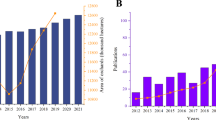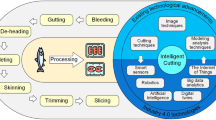Abstract
With rising feed rates of wood working machines, it is important to realize a process-integrated quality assurance. The quality control of produced workpieces is mainly carried out by the operator. As his capabilities are limited, an automated quality control system can help to assure a constant quality level. Due to the high production speeds, only an optical measurement can be used. While CCD-camera-based control systems are generally applied in wood working, no approach has been made so far to measure the surface roughness which is caused by the machining of the workpiece. This paper presents two different quality control systems for an assessment of the surface quality of a workpiece. In planing of solid wood, the size of the waves on the surface is most significant for workpiece quality. An image processing system has been developed which measures the width of the waves by means of a special illumination. In machining chipboards, the size and number of cracks in the edge are very important. Here, a camera-based system is presented which is able to measure the complete workpiece edge even at high feed rates with a sufficient resolution.







Similar content being viewed by others
References
Grübler T (2005) Einsatz der Bildverarbeitung zur Qualitätssicherung in der Holzbearbeitung. Dissertation, TU Braunschweig, IWF
Hoffmeister HW, Grübler T, Loohß T (2005) Image processing as a tool for process-integrated quality assessment. In: Proceedings of the 17th international wood machining seminar, Rosenheim, pp 385–390
Schadoffsky O (2000) Topographiebewertung zur Prozessbeurteilung beim Fräsen und Schleifen von Massivholz. Dissertation, TU Braunschweig, IWF
Plinke B (1990) Optische Qualitätsüberprüfung von Holzoberflächen. WKI-Report 622, Fraunhofer WKI, Braunschweig
Hoffmeister HW, Grübler T (2000) Objektive Bestimmung von Jointintervallen durch Messung der Messerschlagsweite. HOB—Die Holzbearbeitung 47(9), pp 83–86
Fuchs I, Zachäus A (1996) Kanteninspektion für die holzverarbeitende Industrie. Workshop “Ansätze für die Prozessdiagnose bei der Holzbearbeitung”, ihd GmbH, Dresden
Dubenkropp G (1981) Einsatz eines neuartigen Sensors zur Messung der Kantenschartigkeit als Kenngröße für Wirtschaftlichkeitsbetrachtungen beim Kantenfräsen beschichteter Holzwerkstoffe. Dissertation, TU Braunschweig, IWF
Acknowledgments
Support for this work was provided by the German Society for Wood Research (DGFH) through the grant of the German Federation of Industrial Cooperative Research Associations “Otto von Guericke” (AIF) under Contract No. 11539 and 13205.
Author information
Authors and Affiliations
Corresponding author
Rights and permissions
About this article
Cite this article
Hesselbach, J., Hoffmeister, HW. & Loohß, T. Process-integrated quality assurance in wood machining centers with the help of image processing. Prod. Eng. Res. Devel. 1, 97–101 (2007). https://doi.org/10.1007/s11740-007-0032-x
Received:
Accepted:
Published:
Issue Date:
DOI: https://doi.org/10.1007/s11740-007-0032-x




